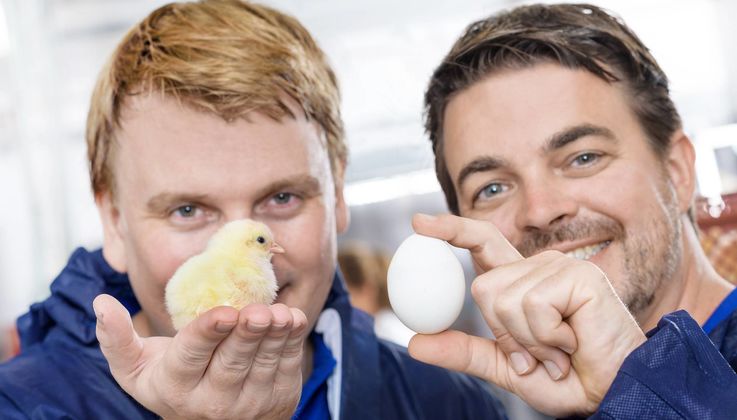
Sciencing the global food challenge
The United Nations projects the world population to reach a staggering 9.8 billion people by 2050. Using today’s food production practices, it would be entirely unrealistic to expect to feed so many people. Evonik sees the task of feeding generations to come as a challenge. A global food challenge.
The United Nations projects the world population to reach a staggering 9.8 billion people by 2050. It would be entirely unrealistic to expect to feed so many people using today’s food production practices. Achieving worldwide food security for generations to come, while at the same time reducing greenhouse gas emissions and protecting valuable ecosystems associated with food production, is a task many believe is a crisis in the making.
Evonik sees things differently. With our scientific mindset and our advanced technology, we face the facts. It will take a globally concerted effort, but the challenge is surmountable.
A huge proportion of world population growth will be in sub-Saharan Africa, a region where one quarter of the population is already undernourished. Boosting yields in sub-Saharan Africa, which currently has the world’s lowest cereal harvests despite vast amounts of arable land, could make a decisive contribution – precisely where need is expected to become particularly high. One reason for the low yields is the fact that this region is also greatly affected by climate change. Severe drought and flooding have repeatedly wiped out crops and livestock in the recent past.
Change in current practices
Agricultural productivity has vastly improved over the past decades, but its environmental impact has become unsustainable. Farming causes nearly a quarter of global greenhouse gas emissions, uses over a third of landmass and accounts for more than two thirds of all freshwater usage from rivers, lakes and aquifers. If current agricultural practices continue, the environmental footprint will get even bigger, caused partly by the increase in the world’s per capita consumption of meat, fish, eggs and dairy products, as affluence in the developing countries increases.
But let's consider where changes could improve the balance. For example, roughly a quarter of the world’s food is lost or wasted between field and fork. Even cutting this rate in half could reduce the food gap by about one fifth by 2050.
Beef farming generates six times more greenhouse gas emissions per unit of protein than pork, chicken or egg production. Shifting just a fifth of future global beef consumption to other meats, eggs or fish could spare hundreds of millions of hectares of land. By using specialty feed additives such as methionine for targeted nutrition in animal feed, land use can be even further reduced, as can the demand for water.
Aquaculture has expanded, producing nearly half of the fish consumed in 2009, but there is still overreliance on wild-caught fish for feed. By using sustainable, plant-based feed additives, fish farms could vastly increase fish production per unit of land and water, while helping reduce the overfishing of the world’s oceans.
New feeding concepts bring significant progress
These are just a few examples of measures that can be realized with today’s technology and resources. Evonik’s Business Line Animal Nutrition supports the livestock industry in making significant progress by boosting efficiency, output and animal health while at the same time contributing to sustainability by reducing emissions to air, land and water.
There is no single silver bullet when it comes to feeding future generations. It will take a concerted effort involving governmental, NGO, academic and business stakeholders on a worldwide scale. It will take a can-do attitude: if we all do what we can and contribute in our own way, humankind can overcome one of the biggest threats that we face for the future.
This is why Evonik sees the task of feeding growing populations not as a food crisis in the making, not as a food gap, but rather as a challenge. A global food challenge. Let's science it.


